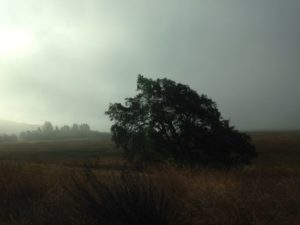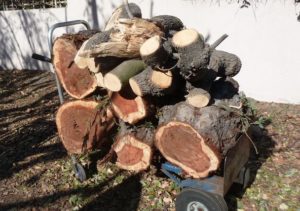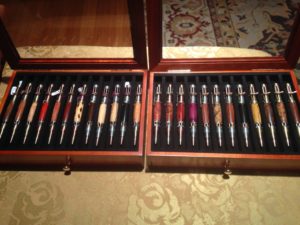Is Hardwood Really Hard?

Many of our patrons ask us why Sev uses hardwoods instead of softwoods to make his products. Actually, most woodworkers prefer working with hardwoods. Sev says that working with hardwoods is ideal because they have a greater range of colors, textures, and grain patterns than softwoods. These variations makes hardwoods the ideal wood for the types of products Sev creates. The other advantage of using hardwoods is that they are generally more dense and therefore more sturdy than softwoods. However, there is sometimes confusion when identifying a wood as hard or soft.
Hardwoods vs. Softwoods
The labels “hardwoods” and “softwoods” can be misleading. Hardwoods are not always a harder material than softwoods and vice versa. Take balsa wood for example, it is one of the lightest, least dense woods you can find, and it is definitely considered a hardwood. When examining the real differences between hardwoods and softwoods, we need to look to science.
The main difference between hardwoods and softwoods actually has to do with how they reproduce. Hardwood trees are angiosperms, which means they are plants that produce seeds having some type of covering, like a fruit or a nut. An apple tree produces apples, which are a tasty fleshy cover for its seeds, while an oak (pictured) produces an acorn, which has a hard shell like other nuts. Angiosperms are also identified by the fact that they produce flowers. Softwoods on the other hand are gymnosperms. This means they are plants that do not flower, and they produce seeds without any seed covering. In fact, the word “gymnosperm” comes from the Greek word gymnospermos, which means “naked seeds.” Unlike angiosperms, gymnosperms drop their seeds by releasing them, usually out of cones, like with pine trees.
Angiosperms vs. Gymnosperms
Another distinction between hardwoods and softwoods is that generally angiosperm (hardwood) trees lose their leaves seasonally while gymnosperm (softwood) trees keep their leaves year-round. But for a few exceptions, deciduous trees are considered hardwoods while many evergreen trees are softwoods. However, continuing to use the words hardwood and softwood to identify types of trees still makes some sense because deciduous/hardwood trees tend to be more dense and have more consistent density within their growth rings, while evergreen/softwood trees are generally less dense and have inconsistent density within the growth rings. The consistent density within the growth rings makes hardwoods easier and safer to carve when you are turning a piece of wood on a lathe. The product then is smoother and more aesthetically pleasing.
In general, Sev tries to limit his hardwood acquisitions to cut-offs, which means he is getting leftover pieces from other woodworkers’ larger projects. He also scavenges the neighborhood for tree trimming and removal projects. In this way, he tries to lessen the impact on the environment.

If you have a chance to go to the Renaissance Faire or to any of the other arts and crafts shows where Sev’s Wood Crafts is a vendor, stop by and ask Sev about the types of hardwoods he uses to make his products. The immense variety of wood colors and textures is mind-boggling. Every piece is a work of art!

2 Responses to “Is Hardwood Really Hard?”